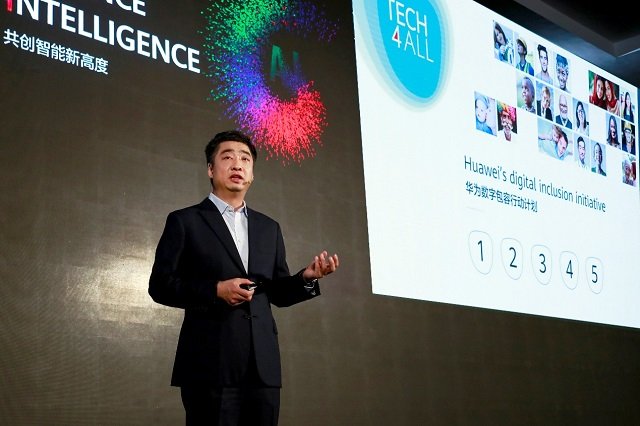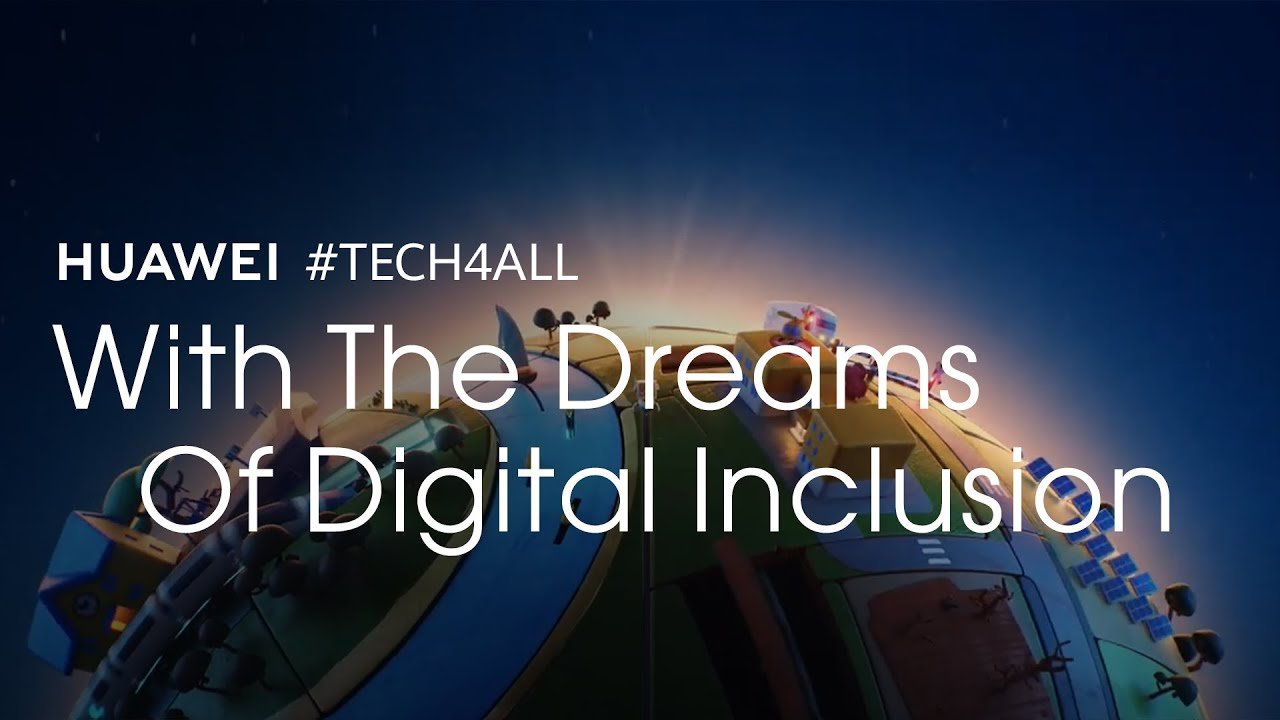Huawei called for global partners to join the TECH4ALL digital inclusion initiative, which aims to build a more inclusive and intelligent world that leaves no one behind.
Huawei’s TECH4ALL initiative focuses on four areas: driving equity and quality in education, conserving nature with technology, driving inclusion and accessibility in health, and using ICT to boost rural development. It focuses on digital technologies, application enablement, and digital skills, and works with global partners to promote and expand digital inclusion to help achieve the UN Sustainable Development Goals (SDGs).
At present, more than 60,000 teachers and students benefit from Huawei TECH4ALL projects in over 200 schools worldwide. Digital technologies have been deployed to improve resource management and biodiversity conservation efficiency in 22 natural reserves around the world. Huawei smartphones provide 15 accessibility features and are used by about 10 million users each month. Huawei’s RuralStar solution provides mobile Internet services for more than 60 countries and regions, covering more than 50 million people in remote areas.

Inclusion and equity were major talking points in the education track of the summit. In her opening remarks, Stefania Giannini, Assistant Director-General for Education at UNESCO, discussed technology-enabled Open Schools, a three-year partnership program with Huawei that is rolling out in Ethiopia, Egypt, and Ghana.
“UNESCO and Huawei jointly launched this project in July 2020,” said Stefania Giannini. “The project explores future schooling models, thereby contributing to UNESCO’s global initiative on the future of education.”
To build a more crisis-resilient Open School system, all countries have to consider the three pillars of new infrastructure for a learning system: technology, digital content, and the digital competencies of teachers and human facilitators. UNESCO’s Dr. Fengchun Miao, Chief of Unit for Technology and Artificial Intelligence in Education, looked at how to leverage the power of technology in the education field.
Vodafone Foundation discussed its Instant Network Schools program, which aims to bring high-quality education to refugees and host communities, with plans to connect 500,000 refugee students and their communities by 2025. Huawei is one of the partners for expanding connectivity to more schools in Africa.
Vodafone Instant Network Schools Program Manager Oisín Walton said, “We believe that every boy and girl should have access to quality education, no matter where they are and whatever their nationality.”
Close the Gap’s DigiTruck Program Lead Bram Over gave an update on the DigiTruck program. DigiTrucks are green, solar-powered mobile classrooms converted from shipping containers. They are equipped with recycled ICT devices and provide training for young people in digital skills. Huawei has supported this program in Kenya and France. Later this year, Huawei and Close the Gap will implement the project in Ethiopia.
Ling Hui from the YouChange China Social Entrepreneur Foundation introduced the Green Pepper program for young teachers in rural villages in China. The program delivers a year of online training to teachers and has reached nearly 80,000 young rural teachers and 17,000 schools so far.
In her opening remarks introducing the environment track, IUCN Director General Dr. Grethel Aguilar addressed a range of environmental issues, pointing out that technology can be used to mitigate humanity’s growing impact on the planet.
Dr. Aguilar said, “Digital technology can be an important part of the solution and help us solve global challenges if used correctly and smartly.”
As a facilitator of the panel discussion, Associate Director of the IUCN Protected Areas Programme James Hardcastle, pointed out that we must empower more people to use technologies for nature conservation and referenced the Tech4Nature initiative – an IUCN-Huawei partnership that aims to develop scenario-specific technologies to safeguard natural ecosystems in 300 protected sites by 2023.
Currently, the project is running in Thailand, Spain, Mauritius, Switzerland, and China. Ecomode President Nadeem Nazurally elaborated on the Mauritius project, which aims to protect and restore the African island nation’s rapidly vanishing coral reef using AI-powered real-time video monitoring, which can be transmitted to experts, both local and worldwide.
Continuing the environmental track, Rainforest Connection Director of International Expansion Chrissy Durkin introduced the Nature Guardian system, which uses acoustics technologies to monitor endangered species and alert rangers to threats like illegal logging and gunshots. Bernardo Reyes Ortíz, President of Forest Ethics in Chile, explained how the Guardian platform supported by Huawei cloud is providing a lifeline for the nation’s endangered Darwin’s fox, fewer than 1,000 of which are thought to remain in existence.
Smart and networked monitoring technologies are crucial tools for nature conservation. Dr. Steph Wray, Chair of The Mammal Society in the UK, how acoustics solutions have been deployed in England to protect the increasingly rare red squirrel, which is threatened by the invasive and vastly more populous grey squirrel.
Tang Yanfei, Executive Director at Hainan National Park Research Institute, explained how acoustics monitoring is key to improving the conservation of China’s critically endangered Hainan gibbon, with a view to doubling its population in 15 years.
Partnerships are the fuel that powers progress in Huawei TECH4ALL environment and education domains, as well as in the initiative’s other two domains – health and development.
“If you want to walk fast, walk alone. If you want to walk far, walk together,” said Tao Jingwen in his opening remarks. “We believe that more partners will work with us to advance the Huawei TECH4ALL action plan in the future. Join us for a more inclusive, intelligent world where no one is left behind.”
Watch the full recording of the summit on Huawei’s website.









